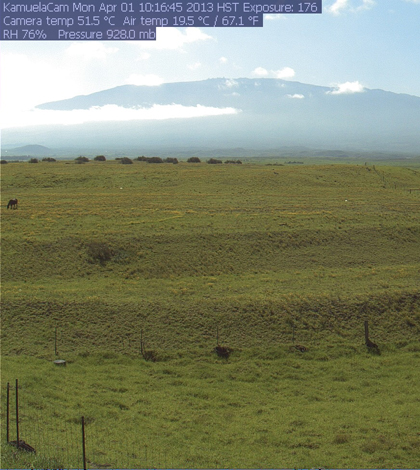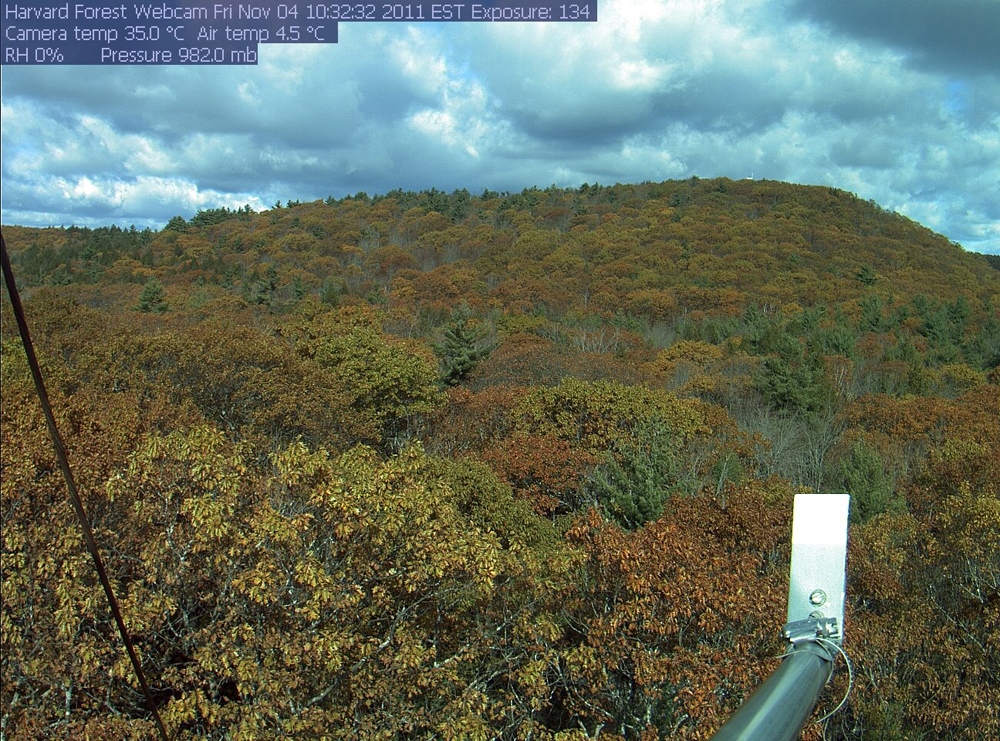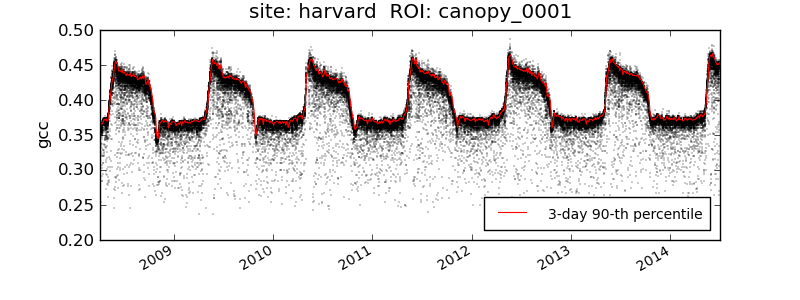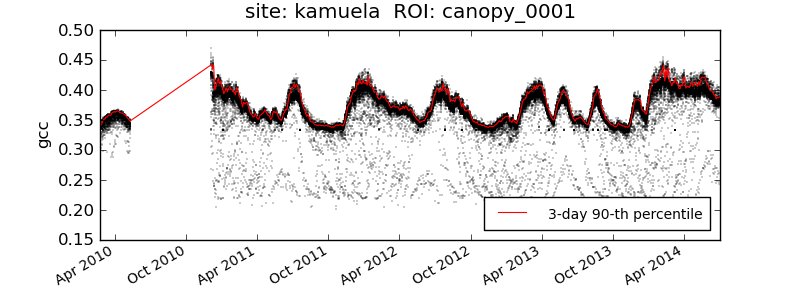The PhenoCam Network tracks changes in ecosystem timing across North America

The view of a PhenoCam grassland site in Waimea, Hawaii, with Mauna Kea in the background (Credit: PhenoCam)
From a Hawaiian grassland to a few New England forests, dozens of landscapes across the world are under constant surveillance by a scientific network of automated cameras.
The PhenoCam network is capturing seasonal shifts in all manner of ecosystems to better understand and predict climate change’s effects on the timing of phenological events, from leaf-out in deciduous forests to the general greening up of savannas.
The 80-some camera sites across North America aren’t just producing a gallery of pictures from local and far-flung locales. The network produces quantitative data that could one day back sophisticated research into ecosystem processes like carbon uptake and hydrology.
It’s also a powerful way to show everyday people how climate change is playing out in their backyards, according to Andrew Richardson, associate professor of organismic and evolutionary biology at Harvard University and the principal investigator on the PhenoCam project.
“It’s one really good way of communicating climate change to the general public,” Richardson said. “If people know that spring is coming 10 days earlier than it was three decades ago, that’s much more tangible than saying temperatures have warmed 3.6 degrees.”

The Harvard Forest network site in November, 2011 (Credit: PhenoCam)
The sites are equipped with networked security cameras that snap photos every half-hour and upload them to the PhenoCam server. The photos are compiled and analyzed by an automated image processing system that pulls a quantifiable level of greenness from the images.
With a long enough time series, a plot of the greenness data reveals patterns in how each system responds to seasonal environmental cues like temperature and rainfall.
Data from a camera overlooking the canopy at Harvard Forest in Massachusetts, for example, shows a regular cycle of greenness climbing in the spring with leaf-out and dropping in the fall with the changing colors.

Data from a PhenoCam site in Harvard Forest show a regular cycle of greening-up followed by leaf color change. (Credit: PhenoCam)
The data from a grassland in Waimea, Hawaii, however, are much less predictable.
“The site is very dependent on pulses of rainfall,” Richardson said. “Those just don’t occur on the same regular seasonal cycle as the deciduous forests in New England.”

Greenness is irregular in a Hawaiian grassland (Credit: PhenoCam)
Vegetation measurements from satellite instruments have been an important tool for tracking phenology. Richardson co-authored a recently published study that tied satellite measurements to other data to show that earlier springs brought on by climate warming in the Northeast have led to increased carbon uptake in forests. In another 10 or 15 years, similar studies will be possible with PhenoCam data, Richardson said.
Scientists on the PhenoCam project are also hoping to use the data to build mathematical models to predict phenology in different ecosystems, as well as how these events might shift in a changing climate. That includes the less technical aspects of phenology that Richardson says that general public understands intuitively.
“They’re seeing their daffodils or crocuses earlier. Maybe autumn colors weren’t quite what they were in the past,” he said. “That’s the kind of stuff we can monitor and track, and then forecast with the data from this network.”
Top image: The view of a PhenoCam grassland site in Waimea, Hawaii, with Mauna Kea in the background (Credit: PhenoCam)





0 comments